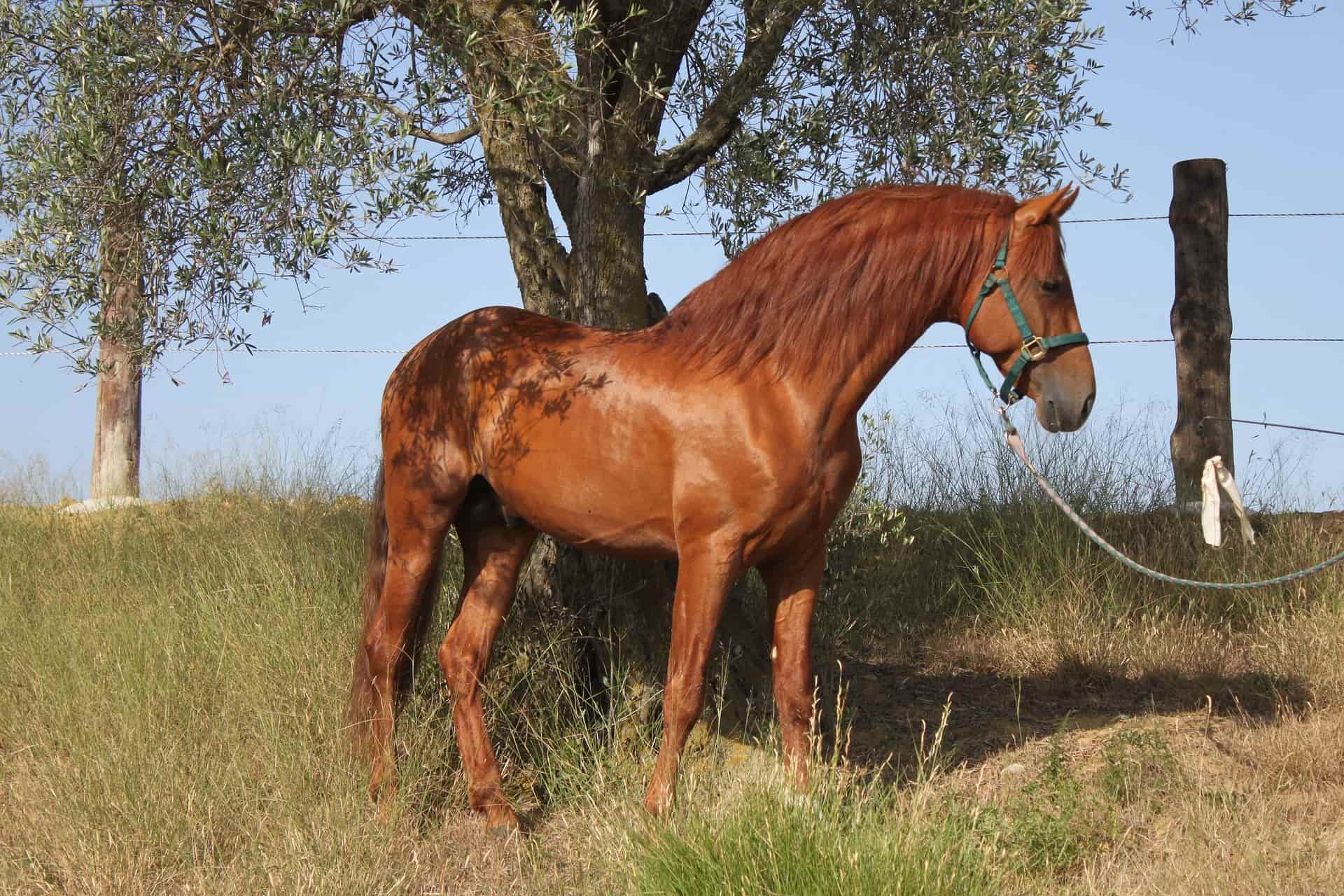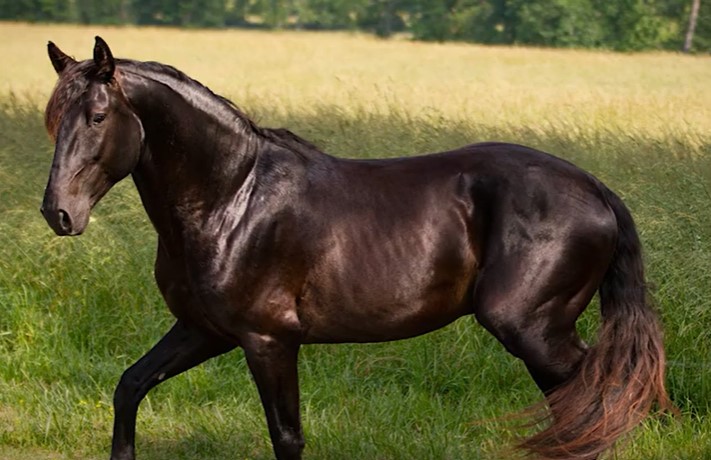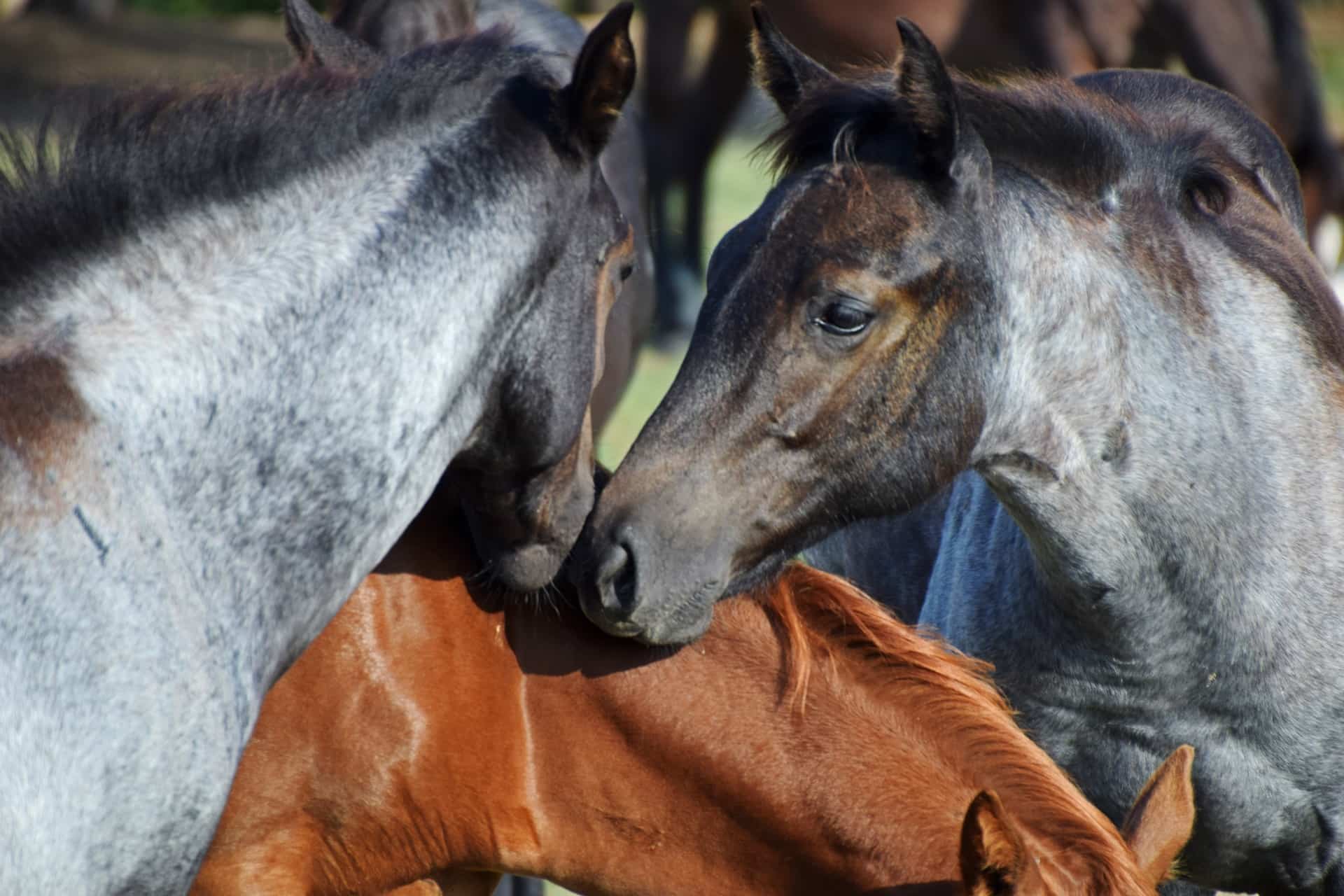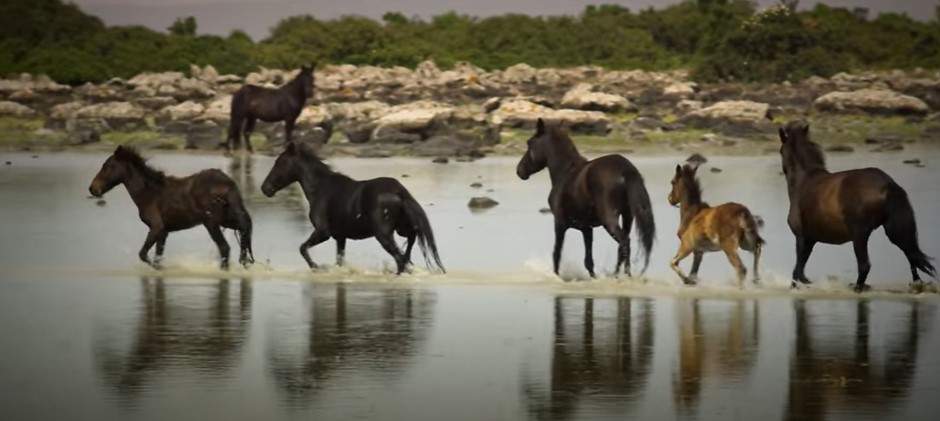Particular value is given to horses with purebred pedigrees. You’ll notice that when buying purebred horses, their prices tend to increase significantly versus mixed breed horses. And that’s mainly because we perceive purity as a marker that a progeny will demonstrate the textbook qualities of the breed it represents.
But despite the high demand and the high estimate placed on pure breeds, there remains solid reason to buy mixed breed horses. Also called ‘grade horses’, these animals can bring together the best of both worlds, combining the best qualities of its parents.
The 9 Most Fascinating Mixed Horse Breeds
Below are some of the best grade horses around and why they are so amazing.
1. Arabian and Thoroughbred Mix
Records that try to recollect the history of the Thoroughbred plainly point to English mares and Arabian horses as the breed’s original parents. For this reason, mixing a Thoroughbred parent with an Arabian parent makes perfect sense, since the breeds have been combined before without problems.
The resulting offspring called the ‘Anglo Arab’ appears taller than the usual Arabian horse. They have a beefier build, and tend to run slower than its pure Thoroughbred parent. Nevertheless, they bear both breeds’ poise and elegance, competing well in show.
Long and slender, Anglo Arabian horses also make good ranch horses because of their willingness and relatively docile demeanor. If the horse is found to have at least 12.5% Arabian horse blood, it may still be registered under the Arabian Horse Association.
2. Warlander
The name itself tells you that the Warlander is a breed to be reckoned with. Although it’s not entirely clear when people started breeding Warlanders, the first record of this specific cross dates back to just the 1990’s. They were mixed with the intention of producing a supreme horse breed, and in a way, breeders did achieve it.
Mixing Iberian horses with the Friesian sporthorse, the Warlander outshines other breeds in virtually every discipline and event including competitive rodeo events, barrel racing (see more breeds for barrel racing), endurance events, trail riding (more trail riding breeds), and show jumping to name a few. For this reason, the grade horse has earned the respect of many breeders across the horse world.
Called ‘super horses’, Warlanders do well in everything their horse owner trains them for. And because they also have a good temperament and a friendly demeanor, Warlanders make wonderful pleasure mounts or humble homestead companions for the average, everyday owner.
3. North American Spotted Draft Horses
Standing at over 17 hands in height, the behemoth North American Spotted Draft horse was bred with the intention of producing a horse with a draft horses body and pinto coloring. This involved mixing together any draft like the Pecheron, Suffolk Punch, American Cream Draft, and Shire, and mixing it with a light breed like Quarter horses.
Spotted Draft horses have been around since the medieval times. And because of the wide variety of potential parents, the North American Spotted Draft Horse Association (NASDHA) registers any qualifying horse as long as it’s spotted (see the most beautiful spotted breeds) and has draft horse breeding. It’s also required that aspiring registrants bear the structure of draft horses, similar to a Suffolk Punch.
According to the NASDHA, horses that apply for their registry also can’t have Gypsy Vanner, Saddlebred, or Appaloosa blood because of specific phenotype requirements set forth by the governing Association.
4. Welara Pony
Started in the 1920’s, the Welara pony was the birthchild of a prominent breeder of that point in time. Because of his popularity, it wasn’t long before the Welara took off as a highly coveted breed in England and neighboring territories. Its compact size and light feet made it a joy to ride and an ideal horse for smaller riders and even children.
Suggested read: Smallest Horse and Pony Breeds in the World
To produce the Welara horse Arabian and Welsh Pony parents need to come together. According to the American Welara Pony Registry, a Welara needs at the very least 1/8th, however not any more than 7/8 genetics from either the Welsh Pony or the Arabian bloodlines. They also don’t allow the horses to have any other breeds in the mix.
With an elegant, elongated body, a beautiful flowing mane, and a friendly, spunky temperament, the Welara pony can stand just 11 hands tall. The AWPR accepts taller horses in its registry however, given that they’re categorized as a Welara Sport Pony.
5. Appendix Horse
A combination of the American Quarter horse and a Thoroughbred, the Appendix horse is a fairly common mixed breed horse that you’ll find in competition, on ranches, and as average, everyday riding horses. Depending on the conditions, a first generation cross Appendix, may be registered with the American Quarter Horse Association, but a separate American Appendix Horse Association also accepts its own registries.
The Appendix horse brings together the desirable traits of both parents. From the Quarter horse, it gets a sturdy built, intellect, a good cow sense, and a strong desire to work. From the Thoroughbred, the horse gets endurance, stamina, and speed.
But it’s not all rainbow and butterflies with this seemingly winning combination. According to those who have worked with the Appendix, it may present an unpredictability and hardheadedness that may be difficult to work with for inexperienced owners.
6. Irish Draft Thoroughbred Mix
Also called the Irish Sport horse or the Irish Draught Sport horse, this particular cross mixes the lightfooted, lightning fast performance of a Thoroughbred with the powerful Irish Draft.
Bred sometime in the 1920’s, the Irish Draft Thoroughbred mix combines the strength, agility, and pleasant demeanor of the two breeds that comprise its genetics.
Today, breeders may include Warmblood breeds in the mix to improve stamina and endurance, and to allow the horses to mature faster in preparation for the show ring and for sport. But because of its particularly calm, docile temperament that it gets mainly from Irish drafts, the horse finds suitable purpose on small farms as a workhorse.
Large and powerful (because of their draft lineage), these horses can do much more than just light farm work. Effortlessly carrying heavy loads and moving ground, these horses can help a horse owner accomplish all the tasks you would expect of a draft while demonstrating the speed and agility of its Thoroughbred parent breed.
7. Araloosa
Also called the AraAppaloosa, the Araloosa brings together qualities from the Arabian and the Appaloosa. Hardy, determined, strong, fast, and sure, The Araloosa shines through with all of the best qualities of the two breeds included in its pedigree.
Because they’re fast learners with supreme trainability, the Araloosa easily surpasses other breeds in the show ring. In terms of how they look, the Araloosa demonstrates interesting appearances with a dappled coat (the Appaloosa horse signature) and a long, slender built.
Araloosas can be registered under both the Appaloosa Horse Club and the Arabian registry. Araloosa offspring that showcase more athletic bodies and other distinct qualities may fall into the Araloosa Sport horse category.
8. Desert Norman Horse
With a long history that dates back to 732 AD, the modern day Desert Norman horse possesses qualities from the Arabian and Pecheron. These horse breeds donate starkly contrasted qualities to their offspring, but the Desert Norman shines as a noteworthy cross breed nevertheless.
Standing at a little over 16 hands, the Desert Norman is calm, intelligent, willing, sociable, and brave. Also called the original sport horse, this breed had had its own registry since the year 2000, the Desert Norman continues to increase in popularity and prominence in present day.
Intuitive and friendly, this breed makes the best choice for owners who want an animal that can attune itself to your presence. The Desert Norman also works well in demanding conditions, mainly because of its hardy Pecheron lineage and its genetics that replicate early horses used in the cavalry.
9. National Show Horse
Mix together the American Saddlebred with an Arabian, and you get the National Show Horse. To qualify as a National Show horse, an individual must possess at least 50% Arabian blood. Combining two purebred horses from these lineages can produce a promising National Show horse, which gets its name from its seemingly inherent affinity for sport and show.
Dominating the saddle seat discipline, the National Show’s long, slender, flexible legs (inherited from the American Saddlebred) give it particular skill in high action. Graceful, elegant, regal, and serious, these horses have a commanding presence that captivates audiences.
Most owners in search of horse breeds with winning potential gravitate towards this breed. And because they’re fairly common, getting your hands on a National Show shouldn’t present too much of a challenge.
Other Horses Produced From Mix Breeding
- Curly horse – Morgan, Mustang, Appaloosa, Missouri Fox Trotter, Arabian
- Pony of the Americas – Quarter horses, Shetland, Half-Arab, Welsh, Anglo Arabs, Connemara, Galiceno, Australian Palouse
- American Paint Horse – Quarter horse, Thoroughbred
- Colorado Rangerbred – Quarter horse, Appaloosa, Thoroughbred
- American Quarter Pony – Quarter horse, Pony of the Americas, Appaloosa, American Paint Horse
The Best of Both Worlds
We can’t deny that purebreds have a distinct charm. But purity and performance aren’t mutually inclusive. Some of the most popular posts of horses online involve beautiful mixed breed horses. Equally strong, courageous, intelligent, and friendly, these crossed horses have made a name for themselves in various disciplines and have found favor in the eyes of owners across every area of the landscape.




